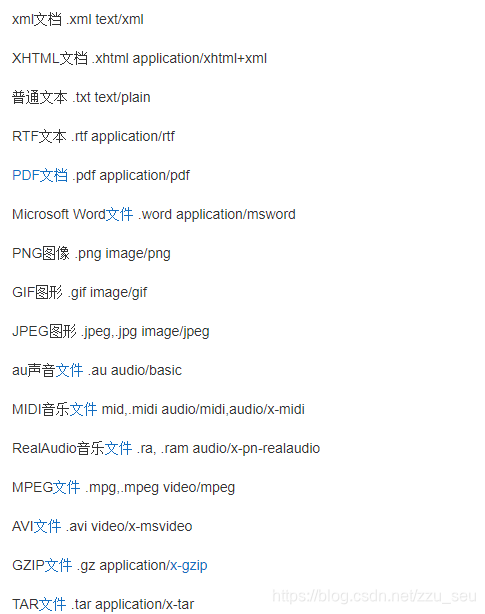基本概念
ServletContext,Servlet上下文,提供对应用程序中所有Servlet所共有的各种资源和功能的访问,是一个全局的储存信息的空间,一个web应用对应一个ServletContext,所以ServletContext的作用范围是整个应用,服务器开始,其就存在,服务器关闭,其才释放。为了节省空间,提高效率,ServletContext中,要放必须的、重要的、所有用户需要共享的线程又是安全的一些信息。
ServletContext的获取方式:
1. 通过request对象获取
request.getServletContext();2. 通过HttpServlet获取
this.getServletContext();两种方式获取到的对象时一样的:
package cn.lwl.web.servletcontext;
import javax.servlet.ServletContext;
import javax.servlet.ServletException;
import javax.servlet.annotation.WebServlet;
import javax.servlet.http.HttpServlet;
import javax.servlet.http.HttpServletRequest;
import javax.servlet.http.HttpServletResponse;
import java.io.IOException;
/**获取方式
* @author liwenlong
* @data 2020/3/23
*/
@WebServlet("/servletContext1")
public class ServletContextDemo1 extends HttpServlet {
@Override
protected void doPost(HttpServletRequest req, HttpServletResponse resp) throws ServletException, IOException {
ServletContext sc1 = req.getServletContext();
ServletContext sc2 = this.getServletContext();
//输出结果为true
System.out.println(sc1 == sc2);
}
@Override
protected void doGet(HttpServletRequest req, HttpServletResponse resp) throws ServletException, IOException {
this.doPost(req, resp);
}
}
主要的功能
- 获取MIME类型。
- 共享对象
- 获取文件的真实路径(服务器路径)
MIME多用途互联网邮件扩展类型。是设定某种扩展名的文件用一种应用程序来打开的方式类型,当该扩展名文件被访问的时候,浏览器会自动使用指定应用程序来打开。举例:

获取MIME类型
String getMimeType(String file);package cn.lwl.web.servletcontext;
import javax.servlet.ServletContext;
import javax.servlet.ServletException;
import javax.servlet.annotation.WebServlet;
import javax.servlet.http.HttpServlet;
import javax.servlet.http.HttpServletRequest;
import javax.servlet.http.HttpServletResponse;
import java.io.IOException;
/**功能介绍
*
* 获取MIME类型
* 共享对象
* 获取文件的真实路径(服务器路径)
*
* @author liwenlong
* @data 2020/3/23
*/
@WebServlet("/servletContext2")
public class ServletContextDemo2 extends HttpServlet {
@Override
protected void doPost(HttpServletRequest req, HttpServletResponse resp) throws ServletException, IOException {
//获取ServletContext对象
ServletContext sc = req.getServletContext();
//定义文件名称
String img = "a.png";
//获取文件类型
String type = sc.getMimeType(img);
System.out.println(type);
}
@Override
protected void doGet(HttpServletRequest req, HttpServletResponse resp) throws ServletException, IOException {
this.doPost(req, resp);
}
}

共享数据
setAttribute(String name,Object value);
getAttribute(String name);
removeAttribute(String name);ServletContext对象的范围:可以共享所有用户的数据。
在ServletContextDemo1中设置那么为 “zhangsan” .
package cn.lwl.web.servletcontext;
import javax.servlet.ServletContext;
import javax.servlet.ServletException;
import javax.servlet.annotation.WebServlet;
import javax.servlet.http.HttpServlet;
import javax.servlet.http.HttpServletRequest;
import javax.servlet.http.HttpServletResponse;
import java.io.IOException;
/**获取方式
* @author liwenlong
* @data 2020/3/23
*/
@WebServlet("/servletContext1")
public class ServletContextDemo1 extends HttpServlet {
@Override
protected void doPost(HttpServletRequest req, HttpServletResponse resp) throws ServletException, IOException {
ServletContext sc1 = req.getServletContext();
sc1.setAttribute("name","zhangsan");
}
@Override
protected void doGet(HttpServletRequest req, HttpServletResponse resp) throws ServletException, IOException {
this.doPost(req, resp);
}
}
在ServletContextDemo2中读取 “name”的值 .
package cn.lwl.web.servletcontext;
import javax.servlet.ServletContext;
import javax.servlet.ServletException;
import javax.servlet.annotation.WebServlet;
import javax.servlet.http.HttpServlet;
import javax.servlet.http.HttpServletRequest;
import javax.servlet.http.HttpServletResponse;
import java.io.IOException;
/**功能介绍
*
* 获取MIME类型
* 共享对象
* 获取文件的真实路径(服务器路径)
*
* @author liwenlong
* @data 2020/3/23
*/
@WebServlet("/servletContext2")
public class ServletContextDemo2 extends HttpServlet {
@Override
protected void doPost(HttpServletRequest req, HttpServletResponse resp) throws ServletException, IOException {
//获取ServletContext对象
ServletContext sc = req.getServletContext();
String name = (String) sc.getAttribute("name");
System.out.println(name);
}
@Override
protected void doGet(HttpServletRequest req, HttpServletResponse resp) throws ServletException, IOException {
this.doPost(req, resp);
}
}
获取文件的真实路径

获取a和c两个文件的真实路径:
package cn.lwl.web.servletcontext;
import javax.servlet.ServletContext;
import javax.servlet.ServletException;
import javax.servlet.annotation.WebServlet;
import javax.servlet.http.HttpServlet;
import javax.servlet.http.HttpServletRequest;
import javax.servlet.http.HttpServletResponse;
import java.io.IOException;
/**获取方式
* @author liwenlong
* @data 2020/3/23
*/
@WebServlet("/servletContext3")
public class ServletContextDemo3 extends HttpServlet {
@Override
protected void doPost(HttpServletRequest req, HttpServletResponse resp) throws ServletException, IOException {
ServletContext sc = req.getServletContext();
String realPath = sc.getRealPath("/a.txt");
System.out.println(realPath);
String realPath2 = sc.getRealPath("/web/c.txt");
System.out.println(realPath2);
}
@Override
protected void doGet(HttpServletRequest req, HttpServletResponse resp) throws ServletException, IOException {
this.doPost(req, resp);
}
}
输出:

